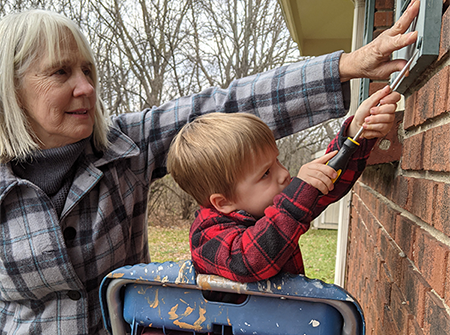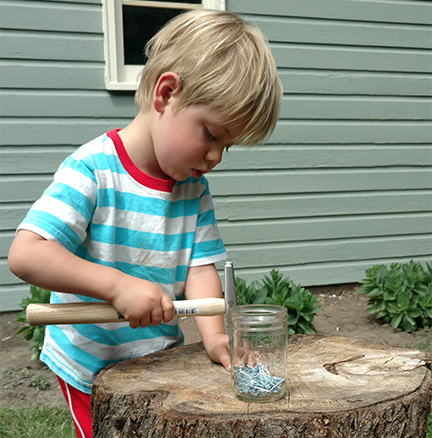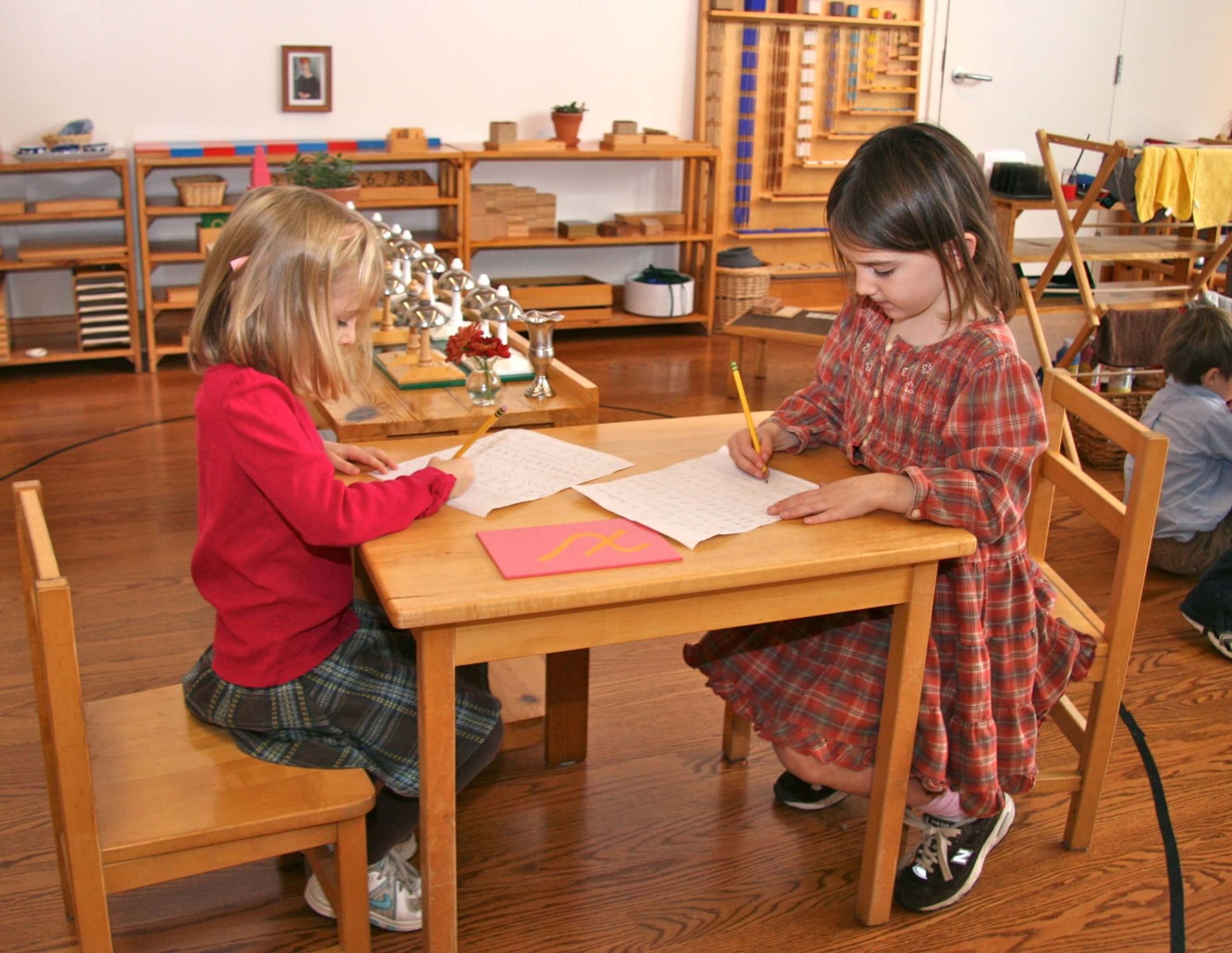
One of Dr. Maria Montessori’s best known pedagogical directives is “Follow the child.” This call is meant to encourage teachers and adults to look to children for inspiration and instruction on their needs, interests, and development. But this directive is not as clear as it may sound. Even as children carry inherent wisdom, they are still children, with incomplete information, narrow perspectives, and immature impulses. To truly follow them in the fullest sense of the phrase would be detrimental—even catastrophic—to them.
Dr. Montessori herself writes:
Therefore he [the child] must be allowed to act freely on his own initiative in this free environment. This statement must not be misunderstood, however: liberty is not to be free to do anything one likes (Maria Montessori, Citizen of the World: Key Montessori Readings).
She never intended for children to be “free to do anything one likes.” This is not true freedom, and this is not what following the child means. Dr. Montessori believed in centering children’s true needs in education and family life. She was the first to thoroughly observe children and then devise an educational and developmental curriculum based on these observations. To this end, her approach was revolutionary at a time when children were “seen but not heard,” and expected to submit to adults’ agendas and intellectual ideas—which were usually cultivated in isolation from an understanding of children’s actual needs.
Our society has evolved in the decades since this phrase was introduced. Now, children are centered in families and cultural conversations. Parents revolve their schedules around their children’s activities, and children have a voice in their family’s conversations. Much of this is a positive development. But it also introduces the question of exactly what Dr. Montessori meant when she told us to follow children.
The answer looks a little different at each of the Planes of Development (0–6 years, 6–12 years, 12–18 years, and 18–24 years*). But they are all underscored by the same perspective: Provide the boundaries your children need in order to choose productive ways of being, and then observe your children deeply for their interests and for what they are telling you with their behavior. While it may seem counterintuitive to “following the child,” establishing guidance and boundaries is a prerequisite for being able to see your child’s true nature and needs. Children need an understanding of the limits of their world in order to feel safe enough to be who they are and grow into who they are meant to be.
*For our purposes, we will discuss 18 months through age 14 years most thoroughly because those are the years children attend our school. Part I covers the First Plane of Development.
The First Plane of Development: 0-6 Years
The First Three Years of the First Plane: 0-3 years
When your child is first born, their needs are simple and clear: Food, sleep, hygiene, warmth, appropriate stimulation, and love. Tending to their necessities during this time involves mostly the balance of these demands. You make sure they are gaining enough weight, sleeping at night and for naps, and spending time in sensorial engagement with the world as they are able. You change their diapers, bathe them when necessary, introduce the world to them, and hold them and snuggle them and talk to them, underpinning all of your interactions with them with the deep and unconditional love that parents feel for their children.
Having a baby is an exciting and exhausting experience! It is time-consuming and challenging, and it requires attention, vigilance, and experimentation to determine when they are hungry, when they need to sleep, how they like to be soothed, and how much stimulation is enough but not too much. However, before they are mobile and verbal, determining how to “follow them” is not terribly mysterious. For the most part, if you are able to find a way to tend to their food, sleep, hygiene, warmth, stimulation and love (which is, of course, a lot of work!), then you are able to follow the child as a baby needs to be followed.
Some time in the second year, once your child is moving and talking, a new set of challenges is introduced. Now, they are able to say “No!” and pull their hand away when they don’t want to hold your hand by a busy road. They can crawl or run away from you when they don’t want to have a bath. They can tell you they want strawberries for dinner when you are serving peas and hamburgers. And it is at this point that parents need to reassess what it means to look to their children for inspiration and information, and what it means to be the leader in their family and maintain their status as older, wiser adults.
Our Young Children’s Community teacher reminds us that children are looking for boundaries. “They will keep going until they find their boundaries!” She says. Children find comfort in knowing where their limits are (See our blog Boundaries are Loving: Parenting with Both Compassion and Limits). Even in the classroom, she shares that the first weeks of fall are spent looking for limits. Then, once they know where they are, they can relax and be productive with their activities. From her perspective, there is no “follow the child” until boundaries have been established.
More specifically, she points out that in issues of safety, there is no choice. Your child must hold your hand when you cross a road or walk through a parking lot. At the most, they may choose, “Would you like to hold my right hand or my left hand?” and if they do not make a choice, then you can carry them. It is a blessing to be bigger than our children when they are small and we can keep them safe with our bodies!
In everyday life, there are ways to give choices and allow children to learn to listen to their own desires without giving them the keys to the car, as it were. In these situations, our YCC teacher reminds us that we as adults learn to balance choices on a grand scale: “Parents tend to think globally, as opposed to specifically. Children do not need the universe of options. Two will do.”
For example, many parents of toddlers struggle with eating: “My child only eats macaroni and cheese!” Even so, as adults, we know that only eating macaroni and cheese is not a healthy option for a growing child, and allowing that child to continually dictate what they eat for dinner is not beneficial for them physically or emotionally. Instead, a parent may give them two choices, when it is reasonable for the family to do so: “Would you like peas or carrots with your chicken?” These choices tend to go more successfully when you know that your child will accept one of the items on their dish, but, of course, be prepared to stand your ground when they test your resolve!
In every interaction, it helps your child when you frame their (limited) choices with kindness and cheer. You can keep a smile on your face even while speaking firmly and clearly about all the places where parents of young children often find their struggles: Food, toileting, dressing, and sleep. As a rule of thumb, pare down the choices (“You may hold my hand or I can carry you,” “You may use the potty or the toilet,” “You may wear the red pants or the blue pants”), and then maintain an air of cheerful steadfastness. While your child may push against these restrictions, they will adapt when they realize you say what you mean and you mean what you say!
Of course, there are times when your child may not have a choice. The needs of the family may limit the input your child can have. The expectations of our world may limit the input they can have. This is a good lesson for them to learn also, and your child can adapt to this reality too.
In these situations, express the restriction clearly and compassionately and with limited language: “This is something you just have to do. I know it’s frustrating. It is time to get in the car now.” The longer you engage in these struggles, the more they will come to believe that they can wear you down. It is a kindness to show them where the expectations of their world are, quickly and clearly.
Once your child basically understands what the boundaries in their lives are (with the understanding that children will continue to test them as they grow and as circumstances change), adults can more easily “hear” a child’s internal wisdom and follow their developmental needs. To this end, following the child does not mean letting them choose whatever they want for meals, refuse to hold your hand, demand to wear a princess dress or party shoes to school, or run across the road when it is time to walk to the car. These are the whims of a child who does not understand what the boundaries of the world are.
Following the child means observing what interests them—small insects or beautiful leaves on a walk, joining you in the kitchen for baking or cooking, sweeping the floor, or scrubbing a table. It means watching for their productive interests and inclinations and developing those at times that it is convenient for the family routine. It also means—if you find that you don’t have time to do any of these things with or for your child—considering your family routine and reassessing where your family’s time is spent and what your daily priorities are.
It also means observing what they need. If they are always cranky and cry in the late afternoon, do they still need a nap? Do they need an earlier bedtime? If they consistently make a mess with their books and toys in their room in the morning, do they have too many books and toys in their room? Are they waking up too early? Do they have too many choices? Too few? Do we need to reassess their routine? Or are they simply looking for a boundary? Their behavior is full of information! It is our role as parents to determine what they are telling us so that we can follow their true natures and not their impulses.
The Second Three Years of the First Plane: 3–6 years
At some point around the age of three, children become more fully conscious of themselves as individuals. They know that they are separate beings from their mothers and fathers. They have an idea of their place within the community of their classroom. All of this means that they now realize that they have autonomy, and they are eager to exercise it—for better and for worse! Following older First Plane children involves first introducing them to the boundaries of their autonomy.
Children of all ages depend on boundaries for security. Our Primary teacher reminds us,
“If children feel like they can push back on a limit, then they will no longer believe that the limit is there in the first place. Adults can make exceptions to rules because they have adult brains. For young children, exceptions mean there are no rules.”
Increasingly, at this age, your children are encountering your limits, as well as the limits of their community. If your child attends our school, then there is a dress code. There are expectations of behavior on school grounds. There are guidelines about what they can and can’t bring to the classroom each day. It can feel tempting to “follow the child” by letting them push back against the rules of their school, and many parents have an understandable desire to raise children who are comfortable expressing themselves and don’t simply follow all rules blindly. These are admirable qualities! But a child who doesn’t first know how to belong to an upstanding community will have trouble ever learning how to stand out with both authenticity and integrity.
Belonging is an integral part of being human. The feeling of belonging brings security and self-esteem. The first step is to deeply consider the community you are bringing your child into. Presumably, you have thoughtfully chosen a school that you believe values honesty, kindness, and other qualities that are important to you. The next step is to support your child in integrating into this community. This means accepting the rules and guidelines of the school, and enforcing these rules and guidelines with your children.
Our Primary teacher observes, “Sometimes there are children who regularly come to school not in dress code. Their self-esteem suffers. They don’t feel like they are a part of our classroom. Other children ask them, ‘Why are you in party shoes? Why did you bring your doll to school?’ The other children know and respect the rules, and these children notice they don’t fit in. They are being put at a disadvantage in more ways than their parents can imagine. They feel powerless and out of control and they don’t know why.”
These children know the rules, but they haven’t been taught to respect them. When they are allowed to make decisions that go against their school’s expectations, they think, I can make decisions about the rules at school! This makes them feel out of control because they come to believe that they are in charge, and they know that this is not a safe arrangement. Allowing children to ignore rules of institutions that you respect is not following the better nature of the child.
These same emotional experiences apply to their life at home also. They know that you are the adults in the house. When they are allowed to make decisions that go against the rules and expectations of your home, that power will, ironically, make them feel powerless. It is no favor to our children to be vague or flakey with boundaries or rules. They need to learn how to feel secure in a trusted group first, before they can feel safe growing into the people that they want to be.

To that same end, there is no “follow the child” until your child understands and respects the expectations of your home and their community. Once they know what the limits are, then they can relax and be productive with their interests and behavior. At this time, the same concepts apply to the 3–6-year-old as the 0–3-year-old. When your child expresses intellectual interest in some aspect of the world around them, support them in their curiosity and exploration. When they want to learn how to bake cookies or cut carrots or rake leaves, take the time to show them how to engage in these productive activities. You will notice that your child is seeking greater independence and more complicated work. This is a natural and important development for this age! Where before, they might simply have dumped ingredients into a bowl for baking, now they can be a part of scooping and measuring. Allow them to be more involved in useful work around the home.
Following the child also means that when they are crying or upset or you find yourself fighting the same battle every day, you can look at the environment and routine around them to see if they are expressing a physical or emotional need. Perhaps they are tired or hungry. Perhaps they need more simplicity in their routine. If they understand the boundaries of their home and community, then you can trust that their emotions and interests are coming from their true nature.
Parts 2 and 3 of "Follow the Child" coming next month!


